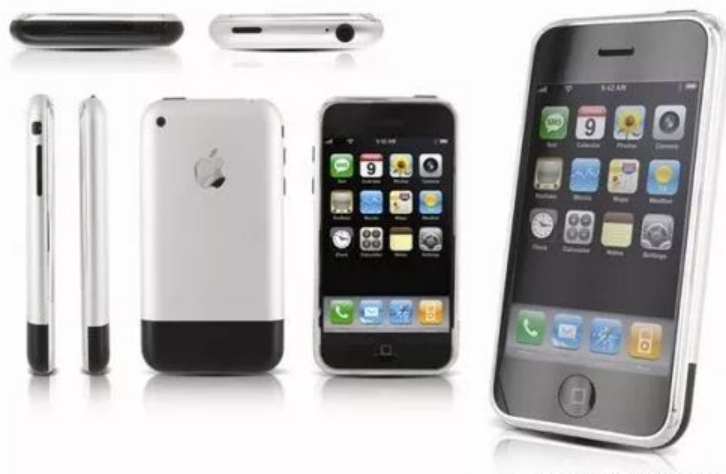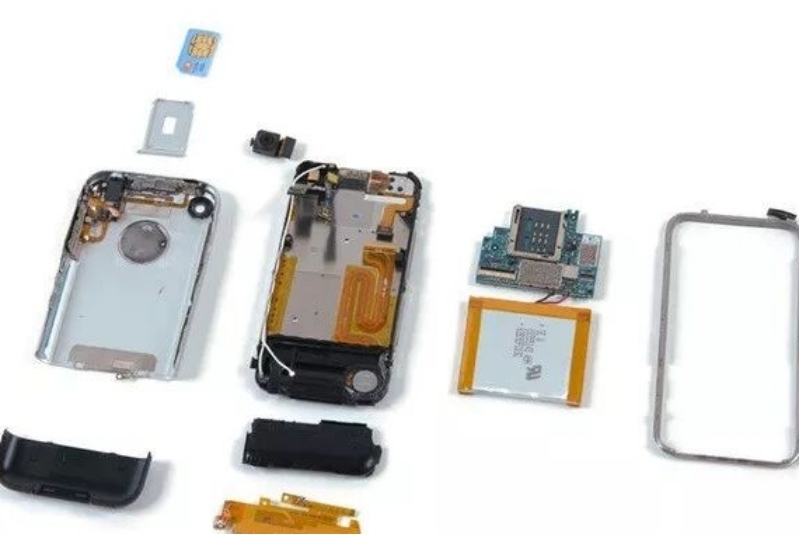Structural, internal components
This section provides an overview of the Front view, front view, rear view, top view, side view, long and short sides, axonometric drawing……
Al Alloy Anodization Back Cover+ Plastic Painting Back Cover+Stainless SUS Frame+TFT-Lcd+ Mavell’s Chip, awesome.

Aluminum alloy rear cover process: aluminum extrusion + stamping + CNC + sandblasting + anode + laser. According to the analysis of materials at that time, it was probably 6 series aluminum, which was quite impressive. At that time, the 5 series aluminum was used for iPod mp4 classic, but it was not aluminum extrusion but forging.
The plastic rear shell part, the process should be injection molding + baking paint.

The sleek black accents: The stainless steel frame boasts premium craftsmanship with CNC precision machining and mirror-polished finish – an engineering marvel. It’s no wonder the SIM card holder next to the large headphone jack, visible in the original iPhone, was crafted from aluminum alloy through precision anodizing – a testament to Apple’s commitment to precision engineering.
Dear readers, the fit between the SIM card tray and back cover is shockingly tight. At this stage, many smartphone manufacturers still can’t even meet basic assembly standards. But I believe this must be a categorized assembly process – essentially following the principles of tolerance and fit. In fact, all major brands are now playing by these established assembly standards.
Focusing on CMF, I went through the Flowchart of structural parts and took a look at the disassembly.
-
Apple Hardware Design: Redefining the Fusion of Technology and Aesthetics
Exploring the Innovative Path of Apple Hardware Design At the intersection of technology and art,…
-
iPhone 17 series tear down, let’s appreciate Apple’s top-notch hardware design
Structural, internal components iPhone 17 series teardown, let’s appreciate Apple’s top-notch hardware design. The iPhone…
-
Disassembly the iPhone 2G,first Gen
Structural, internal components This section provides an overview of the Front view, front view, rear…
-
Innovating solutions for tomorrow, today.
Golden Prototype is an industry leader providing experienced professional rapid prototyping services and solutions in…
